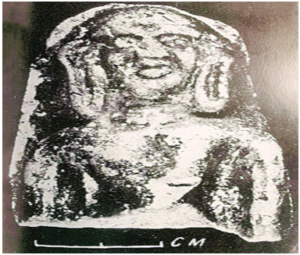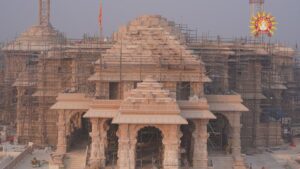Introduction To Ram Mandir Ayodhya
In the heart of Ayodhya, steeped in history and mythology, stands the towering Ram Mandir. It is a symbol of cultural renaissance and religious harmony. This architectural marvel is intricately woven with tapestries of Indian heritage. The construction of Ram Mandir in Ayodhya was not just bricks and mortar. It is a testament to the eternal spirit of the nation, reconnecting with its roots and embracing the values inherent in its cultural heritage.
Ram Mandir Ayodhya Historical Context
Ram Mandir Ayodhya: The Holy Land
Located on the banks of the Sarayu River, Ayodhya is a city resonating with spirituality and history. It is considered the birthplace of Lord Rama, a revered figure in Hinduism and the protagonist of the epic Ramayana. The city has a century of religious significance. The construction of Ram Mandir is the culmination of long-standing aspirations for the temple at the birthplace of Lord Rama.
Babri Masjid controversy:
The history of Ram Mandir is linked to socio-political issues. These have been ongoing for decades, particularly concerning the Babri Masjid controversy. A dispute arose over the Babri Masjid. Some say it was built on the ruins of the 16th-century temple, believed to be the birthplace of Lord Rama. After years of legal battles and public unrest, India’s Supreme Court cleared the way for the construction of the Ram Mandir. The historic ruling came in 2019 on the disputed site.
An architectural marvel
Design philosophy:
The architecture of Ram Mandir is a harmonious blend of traditional and modern elements. Decorated with sculptures depicting scenes from the Ramayana. The temple is a visual spectacle that transports visitors to a time of eternal beauty. The design philosophy reflects not only the aesthetic sensibility of the architects but also the spiritual ethos within the place.
Shikhara and Mandapa: Ram Mandir Ayodhya 
The towering Shikara of Ram Mandir stretches into the sky, symbolizing divine presence. Embossed with motifs narrating Lord Rama’s legend, the Shikara serves as a devotional lamp. A mandapa, or prayer hall, is a large space where the congregation gathers to pray and soak in the divine aura. Architectural elements are seamlessly combined to create a space that resonates with serenity and piety.
Cultural influence
A pilgrimage:
The completion of Ram Mandir made Ayodhya a famous religious pilgrimage site. Devotees from all over the country and beyond flock to this holy place to seek blessings and connect with their spiritual roots. The pilgrimage to Ayodhya became a symbolic journey for millions, reinforcing the importance of faith in the formation of cultural identity.
A symbol of unity:
The construction of Ram Mandir was a catalyst to promote unity and understanding among different communities. An inclusive approach to design and construction reflects a desire to bridge and transcend religious divides. The temple is not only a place of worship for Hindus, but also a symbol of India’s commitment to pluralism and social harmony.
The socio-political landscape
The political significance of Ram Mandir Ayodhya :
The Ram Mandir is of great political importance, with its construction influencing the political landscape of the country. From the beginning of the Babri Masjid controversy, the journey has witnessed various political and ideological events leading to the construction of the temple. The completion of the temple has, in many ways, shaped the discourse on cultural nationalism. It has also influenced the role of religious identity in Indian politics.
Legal odyssey:
The legal battle over the Ayodhya case is an important case that is testing the strength of the Indian judiciary. The Supreme Court’s 2019 decision set a precedent for resolving controversial issues through legal means, creating a sense of convergence in a decades-long legal battle. The legal journey around the Ram Mandir highlights the importance of a reliable and impartial judiciary in upholding the principles of justice.
Economic consequences of Ram Mandir Ayodhya
Tourism and infrastructure
The completion of Ram Mandir has given a significant boost to tourism in Ayodhya. The inclusion of pilgrims and tourists has led to the development of infrastructure such as hotels, restaurants and transportation facilities. The economic benefits extend far beyond the church, creating job opportunities and contributing to the economic development of the entire region.
Professional empowerment
The construction of Ram Mandir provided employment opportunities for artisans and skilled craftsmen. The intricate patterns and sculptures that adorn the temple are the result of the hard work and experience of these artists.
Click To Read More:- History Of Ram Mandir








Recent Comments